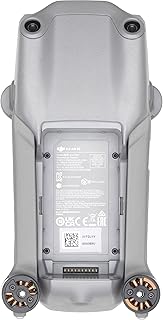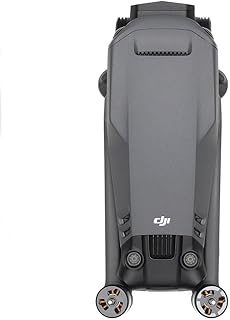The Future of RotorLogic Drone: Innovations and Developments
RotorLogic, a fictional company specializing in drone technology, is primed for exciting growth and innovation. Here are some potential developments that could shape its future:
1. Advanced Autonomy:
* AI-powered navigation: Implementing advanced AI algorithms for autonomous flight, enabling drones to navigate complex environments, adapt to changing conditions, and avoid obstacles with minimal human intervention.
* Swarm intelligence: Developing swarm technology, allowing multiple drones to collaborate and work together for complex tasks, like aerial inspections of large infrastructure projects or coordinated search and rescue operations.
* Real-time data analysis: Integrating real-time data analysis capabilities into the drone's software, allowing for immediate decision-making based on gathered information and providing valuable insights for various applications.
2. Enhanced Performance:
* Hybrid propulsion: Combining electric motors with fuel-powered engines for extended flight times and range, opening new possibilities for long-distance missions, cargo delivery, and aerial mapping.
* Advanced materials: Utilizing lightweight and durable materials like carbon fiber and composites for enhanced performance, efficiency, and payload capacity.
* Improved flight control: Implementing advanced flight control systems with enhanced stability, agility, and responsiveness, allowing drones to perform complex maneuvers and operate in challenging conditions.
3. Innovative Applications:
* Delivery solutions: Developing specialized drones for efficient last-mile delivery of goods, medical supplies, and emergency services, optimizing logistics and reducing delivery times.
* Precision agriculture: Utilizing drones for aerial monitoring and data collection for precision farming, improving crop yields, resource management, and environmental sustainability.
* Infrastructure inspection: Implementing drones equipped with high-resolution cameras and sensors for inspection of bridges, pipelines, power lines, and other critical infrastructure, ensuring safety and preventative maintenance.
4. Safety and Regulation:
* Advanced collision avoidance systems: Implementing robust collision avoidance systems using LiDAR, radar, and vision-based technologies to ensure safe operation and prevent accidents.
* Secure communication protocols: Implementing secure communication protocols to protect drone data from unauthorized access and ensure reliable operation.
* Working with regulators: Actively collaborating with aviation authorities to develop clear regulations and guidelines for safe and responsible drone operations.
5. Integration with Other Technologies:
* 5G connectivity: Utilizing 5G networks for faster data transmission and real-time communication, enabling faster processing and more responsive drone operations.
* Integration with IoT: Integrating drones with the Internet of Things (IoT) for data sharing and communication with other devices and systems, creating smart applications and solutions.
* Virtual Reality and Augmented Reality: Integrating VR/AR technologies for enhanced drone control, simulation, and training, providing immersive experiences for operators and developers.
Conclusion:
RotorLogic's future is bright, driven by continuous innovation and development. By investing in advanced technologies, exploring new applications, and collaborating with other players in the industry, RotorLogic can lead the way in shaping the future of drone technology and its impact on various sectors.
It is important to note that this is a fictional scenario. The actual future of RotorLogic, or any other drone company, will depend on various factors including market trends, technological advancements, and regulatory changes. However, this overview provides a glimpse into the potential innovations and developments that could shape the future of the drone industry.


